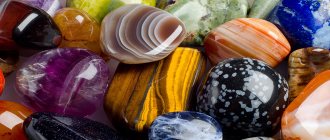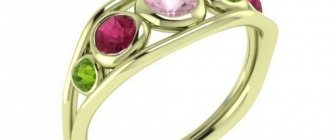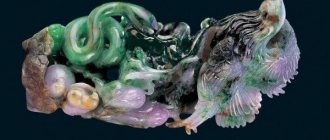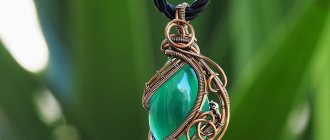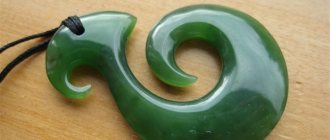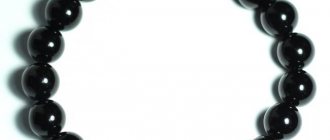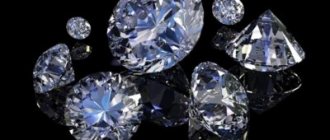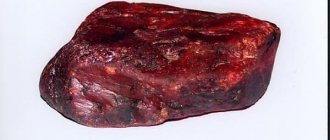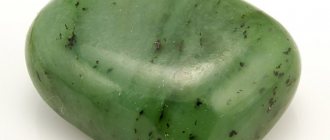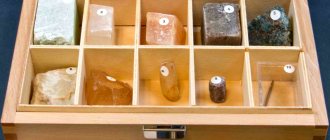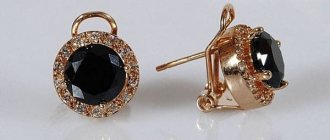| Stone type | Semi-precious, ornamental |
| Prevalence (Deposits) | China, New Zealand, Russia, USA |
| Varieties | Lantian, Nanyang, Xiuyan, Khotan |
| Transparency | Translucent, opaque |
| Shine | Glass, bold |
| Mohs hardness scale | 6—6,5 |
| Chemical composition | Ca2(Mg,Fe)5[Si4O11]2(OH)2 |
| Color | White, blue, yellow, green, red, pink, black |
| Owner's color type | Summer |
| Owner's temperament | Melancholic, Sanguine |
| Names | Alevtina, Galina, Grigory, Inna, Kirill, Lina, Raisa, Taisiya |
| Zodiac sign | Aquarius, Virgo, Cancer |
| Date of Birth | from January 21 to February 18 from August 23 to September 22 from June 21 to July 22 |
| Chinese horoscope | Bull, rabbit |
| Element | Air |
| Planet | Venus, Saturn |
| Day of the week | Wednesday |
| Month | Not found |
| Season | Not found |
| Numerology vibration | 4, 6, 7 |
| Chakra | Anahata, Manipura |
| What stones is it compatible with? | Rock crystal, emerald, labradorite, moonstone |
| What stones is it not compatible with? | Beryl, malachite, sardonyx |
| Therapeutic effect (problems) | Pregnancy, gynecology, mental disorders |
| Therapeutic effect (on organs) | Organs of the gastrointestinal tract |
| Magic properties | Spiritual development, negative energy, rationality, creative development, difficult life situations, luck, strengthening relationships, finance, black magic, energy depletion |
Jade is widely used in the manufacture of jewelry, souvenirs, figurines, and decorative items.
It comes in a variety of shades and is characterized by a fibrous structure. In nature there are stones that resemble this mineral in properties and external characteristics. Therefore, there are ways to help identify nephritis.
What does the stone look like?
Real jade stone is a silicate with impurities that determine the shade of the mineral. Characterized by interweaving of amphibole fibers. This makes jade stones look like layered formations.
The natural mineral belongs to the first class of semi-precious stones, as it is characterized by a high strength index. In this case, the hardness is 6 points. If you throw a stone onto a hard surface, it will leave a dent in the surface. The specimen will not split into fragments.
The most common green gem found in nature. The gamut of the mineral varies from pale green to emerald. This stone also exists in other shades:
- white;
- gray;
- blue;
- red;
- black
The color of the stone depends on the amount and type of impurities.
Be sure to watch: Basic ways to distinguish natural pearls from artificial ones
View this post on Instagram
Jade is the most revered stone in China (it is noteworthy that there are practically no deposits of it in the Celestial Empire itself) and one of the most ancient stones used by man to make jewelry? ⠀ Traditionally, jade has green shades, but are there both black and white jades? ⠀ Is this stone credited with the ability to give vitality, good health and longevity? It suits all zodiac signs and is considered an amulet of sexuality - it gives men strength and women sensuality? ⠀ The photo shows an unusually beautiful set of silver jewelry with jade. Ring, size 18, price 6780 rub. Brooch, price 12,320 rub. Earrings, price 10,480 rub. ⠀⠀⠀ ?You can try it on in the salon - Dostoevsky, 14 Metro “Krasny Prospekt”? Postpone until you try it on by phone, WhatsApp or direct message. ?We will ship to any city.
A post shared by Jewelry in Novosibirsk (@orhidei_mir_ukrasheniy) on Mar 21, 2022 at 7:50am PDT
Depending on the texture, it is divided into 3 groups:
- homogeneous;
- spotted;
- spotted-interspersed.
Various patterns of stripes and inclusions are formed on jades.
A natural specimen is almost not translucent. But if a thin plate of the mineral is examined, you can see a slight translucency along the edges. Jade is characterized by a waxy or oily sheen. When heated, the gem retains heat for a long time.
What types of greeds are there?
Stones processed in an ancient way have their true color. Plum juice is used to wash the stones, and beeswax is used to polish them, making the surface of the stone smoother. The unique structure remains due to the rejection of exposure to temperature and high pressure. These are type A stones and have the highest price on the market.
Type B is jades that have undergone chemical treatment. This method is the simplest and most economical for removing impurities. The stones are centrifuged, adding a material that makes the jade more transparent. A durable substance is used as a top coating.
Type C refers to jade dyed for aesthetic purposes, which has also been bleached using a chemical composition. Their color may change over time due to contact with the body or exposure to direct sunlight.
Analogues offered under the guise of jade
Imitations of jade exist in different variations. Copies of natural origin are stones and layers formed from crumbs of natural minerals. Also, jade can be replaced by other gems that have similar external characteristics.
The most common counterfeit of a mineral is considered to be pressing. It is made from waste left over after grinding and processing natural raw materials. The crumbs are mixed with a synthetic compound and the resulting mass is pressed.
Among the fake black and green minerals, jadeite is often found. It is impossible to distinguish it from jade unless you are a mineralogist. Until the nineteenth century, humanity considered both stones identical, not seeing the difference between them.
Comparative characteristics are presented in the table:
| Mineral | Nephritis | Jade |
| Class | A cryptocrystalline variety of the amphibole group. Characterized by a fibrous structure. | It is a monomineral rock. Silicate of the pyroxene group |
| Shades | Green, less often black, white, orange, gray | Likewise |
| Mohs hardness | 6 | 7 |
Serpentine, serpentine, green marble, and amazonite also resemble jade, but these stones are of less value. Therefore, they are used as fake gems.
Be sure to watch: How to distinguish natural amethyst from a fake
The cheapest fakes are made of glass or plastic, and both types of fakes have their own characteristics:
- when making glass stone, glass is mixed with pigments and fiber additives;
- a plastic specimen is obtained by dyeing a solid mass.
Such stones are usually used in the manufacture of cheap jewelry and souvenirs.
At the same time, there are fakes that are harmless to women’s health and energy.
But there are some that are dangerous, and it is important to know about this.
The most harmless jade counterfeits are a set of bowenite or jadeite eggs. These stones are not contraindicated for the female sphere, but they are not suitable for long-term wear. The most you can do with them is train. They fill little energy, but it’s quite possible to pump up muscles with them.
Unlike the fibrous structure of jade, jadeite has its own granular structure. Sometimes it can be seen even with the naked eye. Because of this, often the surface of jadeite after polishing does not become smooth, like that of jade, but remains rough, like that of an orange. And the luster of jadeite is more glassy, while jade is matte and waxy.
But under the guise of real jade, you may come across a set of eggs made of onyx or serpentine. And this is already dangerous, because such stones literally suck out the energy and completely deprive the woman of power.
And one of the sad options is when pressed plastic is offered under the guise of jade. The consequences of the interaction of such “simulators” with the female sphere can be simply catastrophic and can lead to serious problems with women’s health.
Recognition methods
There are methods for recognizing copies of jade, used in the laboratory and at home.
Visual
If this method is used, then the authenticity of the jade is assessed in terms of the external characteristics of the mineral.
At what points is the copy checked:
- Shine: jade differs from other stones in its muted, greasy shine. Serpentine and other natural copies are characterized by a glassy luster.
- Pattern: A genuine gem is characterized by a clear layered pattern with pronounced color transitions. Analogs have blurred shade boundaries.
- Structure: The fibrous pattern is a distinctive feature of jade. You can examine it under a microscope to assess its authenticity. Therefore, it is easy to distinguish jade from jadeite: the analogue has a clear granular structure, which is uncharacteristic of the genuine specimen.
- Translucency: If you look at the light through jade, you can see that the edges of the stone are slightly translucent.
Mechanical
Mechanical impact will help evaluate the properties:
- Scratching: Take a steel knife or needle and try to make a scratch on the stone. If the specimen is natural, this will not be possible. But it is not recommended to check jade with inclusions in this way, as parts of them may be scratched.
- Viscosity: The stone is characterized by viscosity, which is not found in most natural gemstones. A small specimen can be cut with a sharp knife, but it will not be broken into fragments. When mechanical damage occurs, a dent forms on the surface of the mineral.
- Thermal Conductivity: Jade remains slightly cool to the touch at normal ambient temperatures. But if you heat the mineral, it will retain heat for a long time. Fakes do not have this property.
- Sound: This parameter can be used to test small beads or thin pieces of jade. When they hit each other slightly, they produce a melodic sound. If the product is made from pressed stone or other similar minerals, the sound will be muffled. Attention! This authentication method is not suitable if large products are being tested.
- Fire: this is the most reliable method for identifying a fake, used at home. To conduct the test, you need to take a lighter and bring its flame to the surface. After half a minute, soot will appear on the surface. However, it can be completely removed with a napkin. Soot will remain on the fake. When heated, plastic will emit an unpleasant chemical odor.
- Durability: if a large jade product falls on the floor, it will not break, since the stone is durable.
Formal
Formal methods include analysis of the cost, origin and documentation that accompanies the specimen being studied:
- Price: the cost of a stone depends on its external characteristics. Rich green and white specimens are considered the most expensive. The highest quality stone costs from 50 US dollars per 1 carat. Such minerals are commonly used in jewelry. An example of average quality costs no more than $30 per carat. The price of pressed imitations will be much lower than the price of the original.
- Country of origin: the most expensive are jades mined in China and New Zealand. Information about the place of extraction can be obtained from the seller.
- Certificate of quality: this document, which includes complete information about the main characteristics of the stone (weight, shade, place of extraction), is available for each authentic specimen. In Europe, the stone is not valued too highly, so it has an affordable price. In the East, on the contrary, it is impossible to purchase cheap jade.
Important! Only a certified gemologist working with special equipment and reagents can give an accurate assessment of the authenticity of a mineral.
To avoid wasting your savings on counterfeits, purchase jade products only in specialized stores that have an excellent reputation among customers.
Pressed
Natural minerals have always been expensive, be it an animal figurine, a craft, or jewelry.
This is primarily due to the fact that it helps to strengthen the health of its owner, endows him with personal qualities, and helps him cope with emotions. There are many people who want to receive additional help, but not everyone can afford to purchase a natural gem. Therefore, they try to find a product at a lower price. But for some reason no one thinks that a fake is not only useless - it can cause additional harm. Often, instead of real black jade, pressed jade is found in products. How to check the authenticity in this case?
Pressed stone consists of waste after processing of real mineral (fragments, shavings, dust). First they are ground and pressed, and then added to synthetic materials. At the same time, the resulting mixture looks like a natural gem.
On topic: Jade stone benefits and medicinal properties
To find out what the craft is made of, you can hold it over the fire for 20–30 seconds (a regular lighter will do). Since plastic is often used to make pressed stone, the product will begin to melt, and you will notice a specific smell. In addition, a dark-colored spot will remain at the point of contact with the fire (although it is hardly noticeable against a black background).
The natural mineral is not subject to deformation from the fire of a lighter , so before you buy the product, ask the seller for permission to test it. Refusal to conduct the experiment will only indicate that they may be trying to sell you a counterfeit product.
Main conclusions
1. Jade is a fibrous stone that comes in a variety of shades. Characterized by high strength and oily shine.
- The gemstone is replaced with serpentine, jadeite and other minerals with similar visual characteristics. Artificial fakes consist of painted glass and plastic.
- Visual, formal and mechanical methods help to distinguish a stone from a fake. However, only a specialist can accurately assess the authenticity of a stone. To avoid buying a fake, choose trusted stores.
Share your experience in determining the authenticity of jade and leave feedback in the comments.
Where can you buy jade eggs for yourself?
You can please yourself with jade of remarkable quality here.
Set of 3 jade eggs.
Why jade?
Jade egg practices have always been a special women's secret. It was owned only by dedicated, selected women. And for their sake the men were ready to do ANYTHING. And then, in ancient times, and now - in our happy times, jade is a stone full of miracles. It amazingly changes the life of a woman who chooses it for herself. Placed in the sacred female womb, ... Tag “Next” Happiness, love and magic to you, my dears))) With love, Yulia Boyko
Varieties
Dianite . Tradename. Blue jade. The name was received in honor of Princess Diana.
Color from gray-blue to gray-blue.
Chinese masters, who have studied the mineral for centuries, also share its varieties.
For them, there are two main types of this stone:
- Shan-liao - from the mine workings.
- Tzu-er-liao - from streams and rivers.
The latter is valued much higher, since over millions of years, as a rule, only the “heart of jade” remains in the pebbles - the hardest and most homogeneous material.
Their prices differ dramatically.
